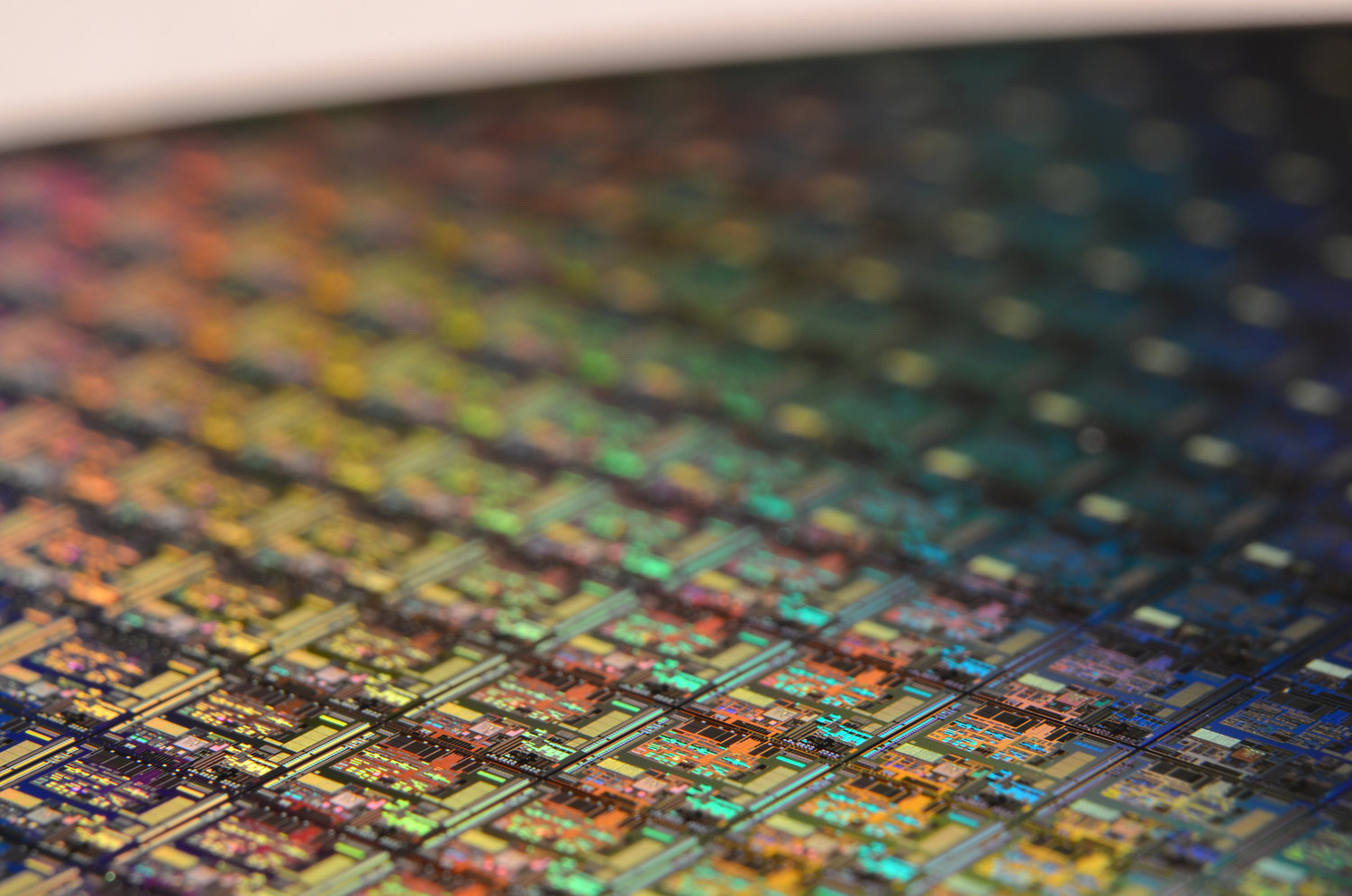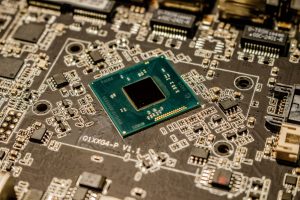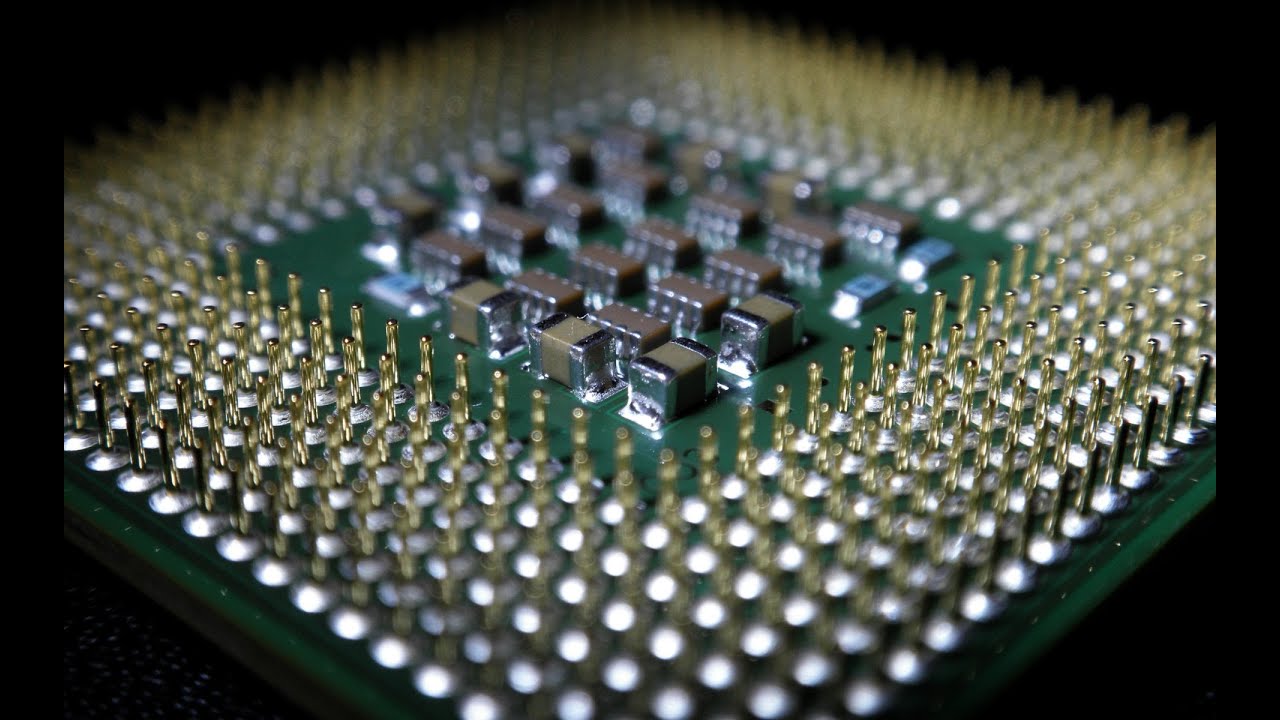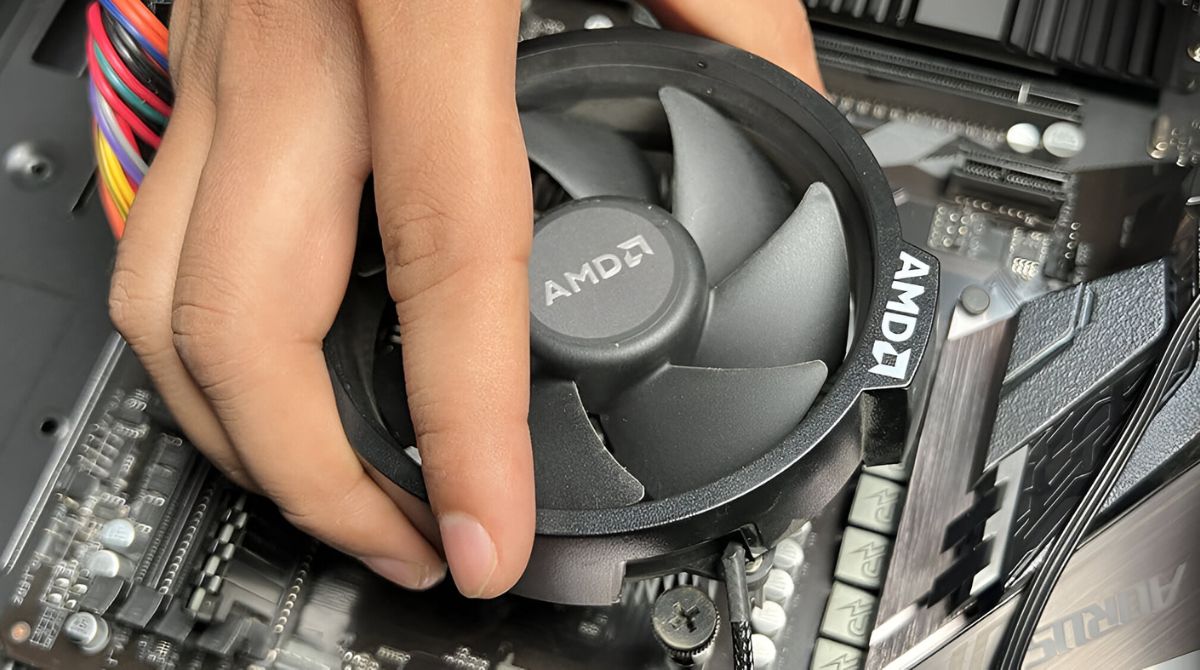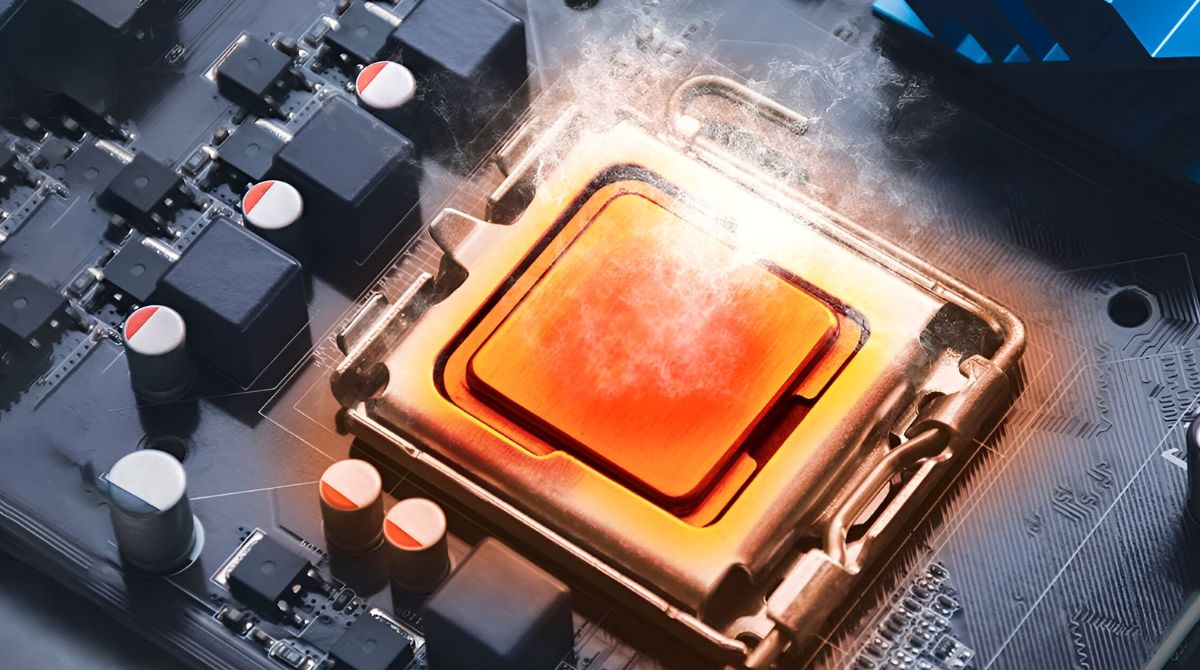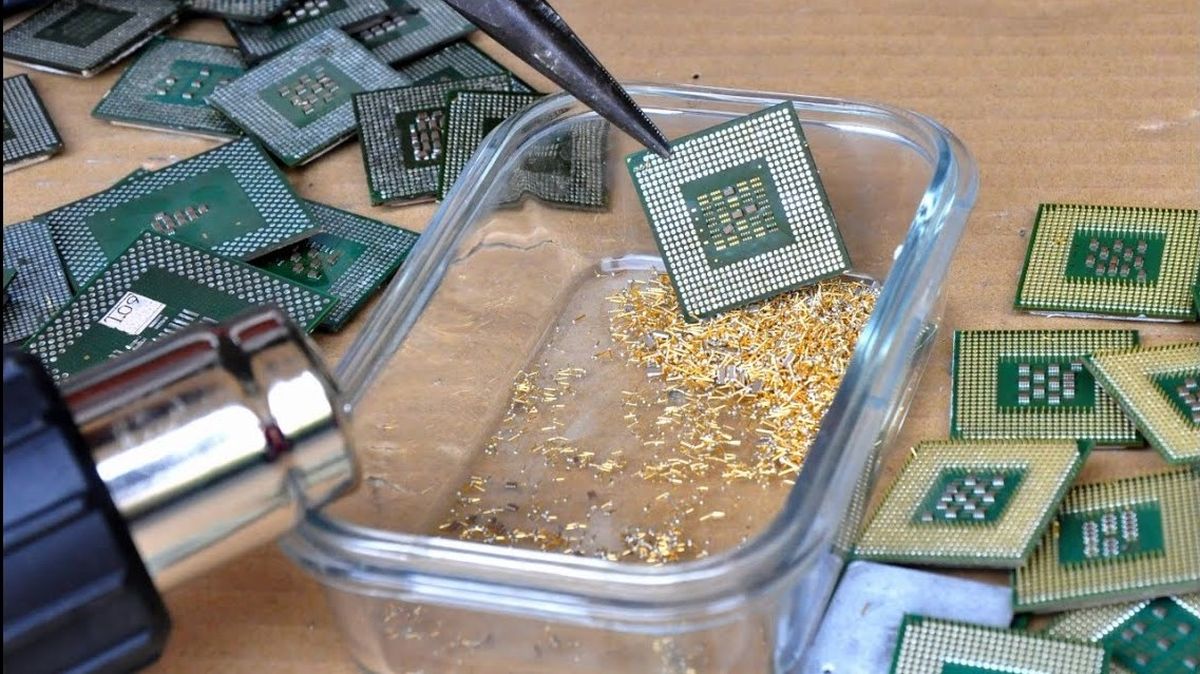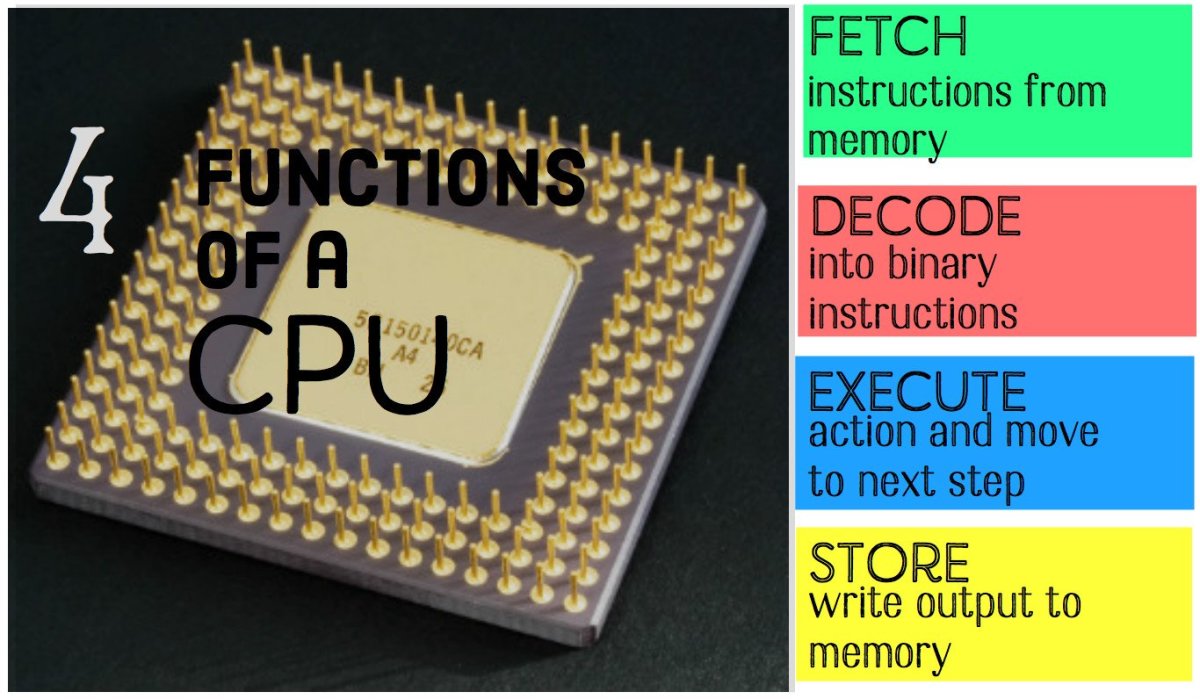Introduction
When you think about the incredible processing power of modern computers, it’s easy to take for granted the tiny but mighty components that make it all possible. One such component is the transistor, a crucial building block of all electronic devices, including central processing units (CPUs).
Transistors are semiconductor devices that amplify or switch electronic signals and serve as the fundamental building blocks of digital circuits. They are responsible for the rapid computations and data processing that computers undertake every second. Without transistors, the capability of CPUs to handle complex calculations and perform numerous tasks simultaneously would not be possible.
The evolution of transistors in CPUs has been nothing short of remarkable. In the early days of computing, CPUs contained only a handful of transistors, limiting their processing power and capabilities. However, with the advancements in technology, engineers and scientists have been able to cram an astonishing number of transistors onto a single chip, leading to exponential growth in CPU performance.
In this article, we will explore the question: “How many transistors are in a modern CPU?” We will delve into the factors that have contributed to the continuous increase in transistor count, the impact of this increase on CPU performance, and the challenges faced in manufacturing CPUs with such a high transistor count.
By understanding the significance of transistors in CPUs and the continuous advancements in their design, we can gain a deeper appreciation for the incredible power and capabilities of modern computers.
What is a transistor and why are they important in CPUs?
A transistor is a crucial electronic device that can amplify or switch electronic signals, making it an essential component in various electronic devices, including CPUs. Transistors are made from semiconductor materials such as silicon and are designed to control the flow of electrical current. They act as tiny switches that can be turned on or off, allowing them to represent the 0s and 1s that form the basis of digital information.
The importance of transistors in CPUs cannot be overstated. CPUs are responsible for executing instructions and performing calculations in computers. To perform these tasks, CPUs rely on millions, and sometimes billions, of transistors that work together to process and manipulate data at lightning-fast speeds.
Transistors in CPUs act as the building blocks of logic gates, which are essential for performing arithmetic, logical operations, and controlling the flow of data within the processor. By combining and arranging transistors in different configurations, CPUs can perform complex tasks and execute instructions in a precise and efficient manner.
Additionally, transistors in CPUs enable the storage and retrieval of data within the processor by controlling the flow of electrical signals. This allows CPUs to rapidly access and manipulate data stored in memory, which is crucial for executing programs, running applications, and performing various computing tasks.
Without transistors, CPUs would not be able to process instructions, perform calculations, or store and retrieve data. They are the backbone of CPU functionality and play a fundamental role in determining the speed, efficiency, and overall performance of a computer.
As technology continues to advance, the size of transistors has shrunk significantly, allowing for more transistors to be packed onto a single chip. This trend, known as Moore’s Law, has led to a continuous increase in transistor count in CPUs, resulting in exponential growth in computing power and capabilities.
In the next section, we will explore the evolution of transistor count in CPUs and the astonishing number of transistors found in modern processors.
The evolution of transistor count in CPUs
Since the invention of the transistor in the late 1940s, the number of transistors incorporated into CPUs has grown exponentially. This growth has been mainly driven by advancements in semiconductor technology, allowing for smaller and more densely packed transistors.
In the early days of computing, CPUs consisted of only a few transistors, typically in the range of a few hundred to a few thousand. These CPUs were limited in terms of processing power and capabilities, and computers were primarily used for basic tasks such as calculations and data storage.
However, as the demand for more powerful computers increased, so did the need for CPUs with a higher number of transistors. The race to increase transistor count led to significant breakthroughs in semiconductor manufacturing techniques. With each new generation of CPUs, the number of transistors doubled, following a principle known as Moore’s Law.
Moore’s Law, coined by Intel co-founder Gordon Moore in 1965, observed that the number of transistors on a chip would roughly double every two years. This prediction has held true for several decades, driving the exponential growth of transistor count in CPUs.
By the 1990s, CPUs were already incorporating millions of transistors, enabling computers to handle more complex tasks and run sophisticated software. This trend continued into the 2000s, with transistor counts reaching tens of millions and then hundreds of millions.
In recent years, we have witnessed the rise of CPUs with billions of transistors. With the advent of smaller manufacturing processes, such as 7 nanometers (nm) and even 5 nm, semiconductor companies like Intel, AMD, and Apple can pack an astonishing number of transistors onto a single chip.
For instance, in 2018, Intel released a CPU called the Intel Core i9-9900K, which boasted an impressive 1.7 billion transistors. Similarly, Apple’s M1 chip, introduced in 2020, contains a staggering 16 billion transistors.
As technology continues to progress, experts predict that CPUs with even higher transistor counts will become a reality. This relentless drive for increased transistor count is fueled by the desire for faster, more efficient, and more capable computers.
In the next section, we will explore the current state of transistor count in modern CPUs and the factors contributing to this incredible growth.
How many transistors are in a modern CPU?
The number of transistors in a modern CPU can vary depending on the specific model and manufacturer. However, it is not uncommon for modern CPUs to contain billions of transistors on a single chip.
The continuous advancement in semiconductor technology has allowed engineers and scientists to shrink the size of transistors, resulting in more transistors being packed onto a smaller chip. This increase in transistor density has led to significant improvements in CPU performance and capabilities.
As of the time of writing, some of the most advanced CPUs on the market have reached the milestone of surpassing the 10 billion transistors mark. For example, AMD’s Zen 3-based Ryzen 9 5950X CPU boasts an impressive 16 billion transistors, making it one of the most powerful consumer CPUs available.
Similarly, Intel’s 11th generation Core i9-11900K CPU features around 10 billion transistors, a testament to the continuous strive for innovation and increased transistor count.
It’s important to note that the number of transistors in a CPU is not the sole determinant of its performance. Other factors, such as the architecture, clock speed, cache size, and efficiency of the CPU, also play a significant role in determining its overall performance.
Nevertheless, the increasing number of transistors allows CPUs to handle more complex tasks, perform calculations quicker, and execute instructions more efficiently. This increase in transistor count ultimately leads to higher computing power and improved user experience.
Looking ahead, the trend of increasing transistor count is expected to continue as technology advances, and manufacturing processes become even smaller and more sophisticated. We can anticipate future CPUs with even higher transistor densities, pushing the boundaries of what is technologically possible.
In the next section, we will explore the various factors contributing to the continuous increase in transistor count and the impact it has on CPU performance.
Factors contributing to the increase in transistor count
The continuous increase in transistor count in CPUs is a result of several factors, including advancements in semiconductor manufacturing processes, improvements in transistor designs, and the demand for greater computational power.
One of the key contributing factors is the advancement in semiconductor manufacturing processes. Over the years, the industry has made significant strides in reducing the size of transistors by developing more precise and efficient manufacturing techniques. This has allowed for the creation of smaller transistors, enabling more of them to be packed onto a single chip.
Furthermore, the development of new transistor designs has played a critical role in increasing transistor count. Engineers and scientists have continuously refined transistor designs, making them more efficient, reliable, and capable of handling higher frequencies. These advancements have led to improved transistor performance and an increase in the number of transistors that can be integrated into a CPU.
Another factor driving the increase in transistor count is the growing demand for greater computational power. As technology evolves, the need for faster, more efficient, and more capable computers intensifies. Whether it’s for complex simulations, data analysis, artificial intelligence, or gaming, users expect CPUs to handle increasingly demanding tasks. To meet these expectations, semiconductor manufacturers are constantly pushing the boundaries of transistor count, allowing CPUs to deliver higher performance and improved capabilities.
Moore’s Law, though not a direct factor, has also been influential in driving the increase in transistor count. The principle, which predicted that the number of transistors on a chip doubles roughly every two years, has served as a motivation and guideline for the industry. Manufacturers have strived to uphold this principle and deliver successive generations of CPUs with higher transistor densities.
Additionally, competition among semiconductor companies has stimulated innovation and fueled the race for increased transistor count. Companies like Intel, AMD, and Apple continuously invest in research and development to gain a competitive edge. This competitive environment has led to groundbreaking advancements in transistor technology and the continuous drive for higher transistor count in each new generation of CPUs.
Overall, the increase in transistor count in modern CPUs can be attributed to advancements in semiconductor manufacturing processes, improvements in transistor designs, the demand for greater computational power, the influence of Moore’s Law, and the competitive nature of the industry. These factors have synergistically contributed to the exponential growth in transistor count, enabling CPUs to perform at unprecedented levels.
In the next section, we will explore the impact of increasing transistor count on CPU performance.
The impact of increasing transistor count on CPU performance
The continuous increase in transistor count in CPUs has had a profound impact on their performance. Higher transistor count results in various enhancements, including improved processing power, faster execution of instructions, and increased capabilities.
One of the notable effects of increasing transistor count is the boost in processing power. More transistors allow CPUs to handle a greater number of calculations and data operations simultaneously. This translates into higher computational capacity, enabling CPUs to perform complex tasks, run resource-intensive software, and handle multi-threaded workloads more efficiently.
In addition to processing power, increasing transistor count facilitates faster execution of instructions. With more transistors available, CPUs can process and transmit data at higher speeds. This means that instructions can be executed more quickly, resulting in reduced latency and improved overall responsiveness.
Moreover, higher transistor count enables CPUs to support advanced features and technologies. More transistors can be dedicated to specific tasks, such as handling graphics processing or machine learning algorithms. This allows for the integration of specialized components directly into the CPU, reducing the need for separate dedicated hardware and improving efficiency.
Increasing transistor count also contributes to improvements in energy efficiency. Smaller transistors consume less power, allowing CPUs to operate at lower voltages and reduce energy consumption. This translates into longer battery life for mobile devices and reduced power consumption for desktop computers, leading to environmental benefits and cost savings.
The impact of increasing transistor count extends beyond raw performance gains. It also enables the development of more advanced and sophisticated software applications. Software developers can leverage the increased computational power and capabilities of CPUs to create innovative applications, including virtual reality, artificial intelligence, and data analytics tools.
However, it’s important to note that the increase in transistor count alone is not the sole determinant of CPU performance. Other factors, such as architecture design, cache size, clock speed, and software optimization, also play significant roles in shaping CPU performance.
As technology continues to advance and more transistors are packed onto CPUs, the potential for future improvements in performance becomes even more promising. The impact of increasing transistor count in CPUs opens up possibilities for new applications, greater efficiency, and enhanced user experiences.
In the following section, we will explore the challenges faced in manufacturing CPUs with higher transistor counts.
Challenges faced in manufacturing CPUs with more transistors
While the continuous increase in transistor count in CPUs has led to significant advancements in performance, it has also posed various challenges in the manufacturing process. Packing more transistors onto a single chip presents technical and logistical hurdles that need to be overcome in order to maintain the progress of Moore’s Law.
One of the primary challenges in manufacturing CPUs with more transistors is the development of increasingly smaller transistor sizes. Shrinking transistors to nanometer scales requires breakthroughs in semiconductor manufacturing techniques. As transistors become smaller, the industry faces difficulties in maintaining precise control over the fabrication process. Small variations in production can have significant impacts on transistor performance and manufacturing yield.
Another challenge is the increasing complexity of interconnections between transistors. As transistor count grows, the number of connections between them also increases significantly. Ensuring the reliability and efficiency of these interconnections while minimizing power consumption and signal degradation is a significant technical challenge.
Heat dissipation is another critical challenge in manufacturing CPUs with higher transistor counts. As the number of transistors packed onto a single chip increases, so does the heat generated. Efficiently dissipating this heat becomes more difficult, requiring advanced cooling solutions and thermal management techniques to prevent overheating and maintain optimal operating conditions.
Manufacturing defects and yield rate are ongoing challenges as well. With a larger number of transistors, the likelihood of defects occurring during manufacturing increases. Even minor defects can render a CPU non-functional. Maintaining high yield rates and minimizing defects is crucial to ensure a viable production process and keep costs in check. Finding ways to improve manufacturing precision and yield while handling intricate designs and complex processes is an ongoing endeavor for semiconductor manufacturers.
Additionally, the growing complexity of designing and verifying CPUs with higher transistor counts poses a significant challenge. The verification process becomes more time-consuming and resource-intensive, requiring advanced simulation and testing techniques to ensure the integrity and functionality of the chip. Designing, simulating, and validating the intricate architecture of a CPU with billions of transistors demands sophisticated tools and methodologies.
Despite these challenges, semiconductor manufacturers have made remarkable progress in overcoming them. They continue to invest in research and development, exploring new materials, manufacturing techniques, and design methodologies to meet the demands of higher transistor counts. The industry is driven by the goal of pushing the limits of what is technologically possible and achieving ever-increasing CPU performance.
In the next section, we will conclude the article by summarizing the key points discussed.
Conclusion
The evolution of transistor count in CPUs has led to tremendous advancements in computing power, performance, and capabilities. From the early days of computing, where CPUs contained only a few transistors, to the present, where modern CPUs boast billions of transistors, the impact of increasing transistor count has been revolutionary.
Transistors, as crucial building blocks of CPUs, have enabled computers to handle complex calculations, execute instructions quickly, and store and retrieve data efficiently. The continuous increase in transistor count has resulted in higher processing power, faster execution of instructions, and the ability to support advanced technologies.
Advancements in semiconductor manufacturing processes, improvements in transistor designs, and the demand for greater computational power have been key factors contributing to the growth in transistor count. Moore’s Law has provided a guiding principle and motivation for manufacturers to strive for higher transistor densities, driving innovation in the industry.
However, manufacturing CPUs with higher transistor counts is not without its challenges. Overcoming technical hurdles such as developing smaller transistor sizes, managing interconnections, heat dissipation, manufacturing defects, and design complexity poses ongoing challenges for the industry. Still, semiconductor manufacturers continuously invest in research and development to push the boundaries of what is technologically possible.
In summary, the increasing transistor count in CPUs has shaped the computing landscape, empowering computers to handle increasingly demanding tasks and deliver higher performance. The future holds the promise of even more powerful CPUs as technology continues to advance, and semiconductor manufacturers find new ways to overcome manufacturing challenges. With each new generation of CPUs, we witness the remarkable progress that has been made and eagerly anticipate the innovations yet to come.







